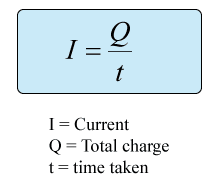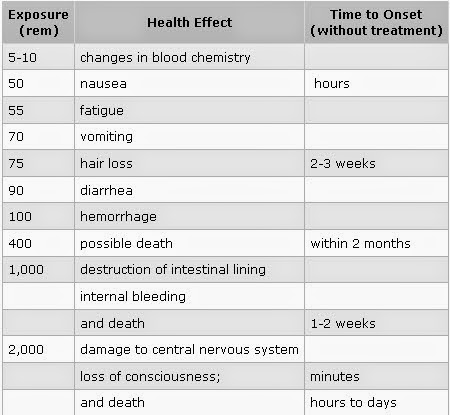After having our final SIP problem which was the remote controlled mop, deadline for the Chapter 1 is coming nearer. As of now, this is our chapter 1...
IMPROVISED REMOTE
CONTROLLED FLOOR MOP
A Research Paper
Presented to the
Science and Research
Department of
Pagadian City Science
High School
San Jose Heights,
Pagadian City
In Partial
Fulfillment of the Requirements
In Research II
Englisa, Ronna
Christma C.
Conol, Annamea
Villa, Kirsteen
2014
INTRODUCTION
1.1BACKGROUND OF THE STUDY
Cleanliness
has been one of mankind’s biggest concerns in his abide. It is undeniable that
cleanliness has been playing a crucial role in terms of health, comfort and
virtue on man for the past millennia. However, keeping this hasn’t also been
easy.
Focusing
on the most basic place in the community, -our homes –people often find
household cleaning as a tiring job. There’s this feather dusting, arranging of furniture,
sweeping and mopping the floors. In cleaning the floor, the all-time favorite
vacuum cleaner came to solve the hardships o this task. But considering the
fact that these floors are usually kept shiny and dust-free, mopping the floor
is no exemption.
This is
undeniable that people are getting busier every now and then. The pile of
schedules and work steal most of their times and energy. Because of this,
keeping the household clean has been quite difficult to maintain compare to the
situation decades ago.
Currently,
a new device has been released in the market called Sugoi Remote Control Mop by
Kyosho Egg. This is a remote control mop that allows you to operate it and mop
the floors without doing many efforts. Just sit on the couch and let it clean
using the remote control. This innovation has been really handy for people
doing the household chores. But, some flaws were observe in this device.
First,
the Sugoi Mop is quite expensive amounting to almost $40 or approximately Php
1,812. Not all people can afford this convenient mop. Considering this case,
not everyone can also benefit in the comfort this mop brings.
Second, the mop can only clean
dusts from the floors and some consumers in online markets complained that it
was just like a toy and not really for cleaning. Though it can make the floor
shiny, this is not enough to polish quite dirty floors. This is because, the
cloth used in this mop has no force to push it down the floor hence not much
force is used to polish the floor. The less force is used, the less shiny and
less clean.
Although there are also existing
robomops or automatic robot mops which are better than the RC floor mops, they
also come with high prices making them unaffordable for people of average
income.
On the
other hand, an article in an innovation website cited that there is an alternative
for this remote controlled toy vehicle.
1.2 STATEMENT OF THE PROBLEM
The
main objective of this study is to produce an improvised mop which is more
efficient in cleaning and is more affordable compared to the ones released in
the market using materials that are easily found in malls and department
stores.
Specifically,
the following sub-problems are aimed to be answer:
1.
How efficient is your improvised floor mop?
2.
What is the significant difference in the output
in cleaning between the RC floor mop and the improvised one?
3.
Is there a difference in terms of effort exerted
and output when using the improvised RC floor mop than the human manual
mopping?
1.3 HYPOTHESIS
HO1. Radio controlled/ remote controlled cars can be
efficient replacements for the body of the remote controlled mop providing that
this toy car is also attached with a mop and in order to make the mop exert
more effort on the floor, a block of wood or anything that is heavy enough can
be used in order to push the mop on the floor.
HO2. There is no
significant difference between improvised RC mop performs similarly to the
commercial remote controlled mop and though it provides a lot more comfort
compared to human manual mopping, the output in human manual mopping is still
better.
1.4SIGNIFICANCE OF THE STUDY
The
fact that this is remote mop and offers a great comfort and relief to people
who are tired enough to clean their floor is one of its greatest asset when
talking about the significance. This study allow this mop to be more affordable
and more efficient in cleaning by correcting the obvious flaws such as its
expensive price and the remarkably little force it exerts upon the floor
resulting in it not really suitable for general cleaning.
Generally,
once this study is pursued, this will boost the mop’s potential to a higher
percent and improve the quality of living on citizens around the globe
particularly those who can’t afford to clean their houses anymore due to their
lack of strength and endurance, at the same time make the price more
affordable.
Particularly,
the housewives or those people who don’t hire helpers in their house, this
innovation can lighter their loads thus, giving them more time for themselves
and to do their unfinished business instead of spending the whole day, cleaning
and working their bodies off.
This
study will also benefit the janitors, janitress and the workers in
establishments and households as this will make their works easier and lighter
at the same time, enlighten them from burdens.
To the
researchers themselves as this study will improve their creativity, hardworking
attitudes, patience and develop their characters which will strengthen their
foundations in the future.
This
study will also be of benefit to the market since this study will hopefully
come out with an improvised, cheaper yet more efficient RC floor mop which will
attract a lot of practical buyers and add on their source of income.
This
will also benefit other researchers and innovators. This study gives them
additional knowledge in remote control devices opening the door of new
opportunities and innovations that will benefit mankind in the future.
1.5 SCOPE AND LIMITATIONS OF THE STUDY
This
study attempts to create an improvised RC floor mop based on the models
released on the market lately. The study will be conducted within the city’s
vicinity chosen by the researchers and the basis for the general acceptability
will be only the cleaning time and efficiency in comparison to the human manual
mopping.
This
study is limited to creating only a more efficient and more affordable floor
mop. The qualities of the improvised device will only be compared to the RC
mops in the market. This will not include the robot mops. This study is also
focused on creating an improvised RC mop that will almost equal the outputs of
human manual mopping. Nevertheless, it’s not really attempting to create a
device better than the traditional way of mopping.
1.6 DEFINITION OF TERMS
Mop – the improvised remote control mop
Traditional way – old way of mopping (human manual mopping)
Regular – RC Mop in the market
We already submitted this to our teacher in Research subject and he said he will return it to us soon. I know this will have corrections and revisions and I'm excited about those :)
xoxo
-Ronna




.jpg)












































.jpg)
